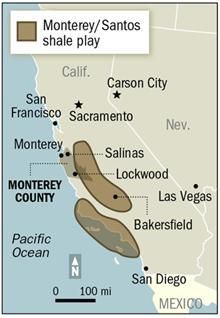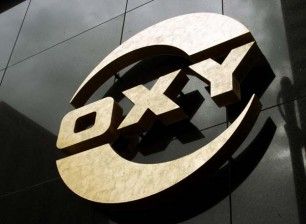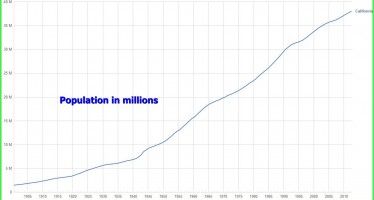Wall Street doubts CA shale hype — but not Occidental
April 11, 2013
By Chris Reed
 Bloomberg News, which is doing an increasingly good job covering California of late, had an important article Wednesday about likely problems in developing the Golden State’s massive shale reserves. Those reserves could transform the state’s economy, according to a University of Southern California study that said drilling for the energy reserves could generate as many as 2.8 million jobs and $24.6 billion in state and local tax revenue by 2020.
Bloomberg News, which is doing an increasingly good job covering California of late, had an important article Wednesday about likely problems in developing the Golden State’s massive shale reserves. Those reserves could transform the state’s economy, according to a University of Southern California study that said drilling for the energy reserves could generate as many as 2.8 million jobs and $24.6 billion in state and local tax revenue by 2020.
Why was it important? Because its downbeat tone mostly didn’t come from the expected sources: the green cultists who hate fossil fuel and who constantly dispense lies about hydraulic fracturing, the improved drilling process behind the brown energy revolution in the Dakotas, Montana, East Texas, Ohio and Pennsylvania. The skepticism instead came from credible people.
From Wall Street:
“’The Monterey shale was supposed to be the greatest thing since sliced bread, but so far has not lived up to the hype,’ Fadel Gheit, an oil and gas analyst at Oppenheimer & Co. in New York, said in a telephone interview. ‘It’s not conclusive that the emperor has no clothes. So far, it has not shown any big sign that this is going to be another Bakken or Eagle Ford.'”
From Chevron:
“’Based on our drilling results, our view is that the oil has migrated out of the formation and is now found in pockets outside of the Monterey shale,’ said Kurt Glaubitz, a spokesman for San Ramon, California-based Chevron Corp. (CVX), the second-biggest U.S. oil producer. ‘We don’t believe it’s going to compete for our investment. We have other opportunities that are more economical for us to develop.’”
And from a scientist who explained what’s behind the skepticism:
“The Monterey shale is more expensive to explore than the Bakken shale that’s yielded an oil boom in North Dakota and the Eagle Ford shale in Texas, said Amy Myers Jaffe, executive director of energy and sustainability at the University of California, Davis.
“’The Eagle Ford is like a pound cake,’ Jaffe said in a telephone interview. ‘The Monterey shale is like a nine-layer chocolate cake and to get all the layers straightened up and put in all the frosting every place we wanted — that’s going to be more complicated and it takes more skill.'”
Betting — and betting big — that the skeptics are wrong
 But the company that’s got the most invested in drilling the Monterey shale is far more confident than the skeptics. As I wrote in November, Occidental Petroleum Corp., the Los Angeles-based energy giant, “estimates the shale reserves on California land it already controls to have over 20 billion barrels of potential oil –- a claim that the company says is made in accordance with the Securities and Exchange Commission’s rule that only ‘economically producible’ reserves can be cited in SEC filings.”
But the company that’s got the most invested in drilling the Monterey shale is far more confident than the skeptics. As I wrote in November, Occidental Petroleum Corp., the Los Angeles-based energy giant, “estimates the shale reserves on California land it already controls to have over 20 billion barrels of potential oil –- a claim that the company says is made in accordance with the Securities and Exchange Commission’s rule that only ‘economically producible’ reserves can be cited in SEC filings.”
That last point is not a small one at all. Energy companies have a history of being cautious in their stock prospectuses and in representations to shareholders and regulators. Oxy has been eying the Monterey shale for a long time and believes it is up to the challenge.
And the context is crucial to remember here. It wasn’t long ago that the Bakken and Eagle Ford shale formations were considered impossible to develop. But then along came the information-technology revolution. The reason hydraulic fracturing, or fracking, is so much more efficient than it used to be doesn’t have to do with crude factors. It’s not the drillers using more powerful streams of water or larger water cannons to fracture rock underground. Instead, IT now allows drillers to use the equivalent of MRIs of vast swaths of underground areas, and to use this information to know where to precisely aim their water cannons.
NYT: ‘New Technologies Redraw the World’s Energy Picture’
And hydraulic fracturing is getting more refined and more efficient with every year. So if Occidental believes it can access California’s Monterey shale, it has good reason to be optimistic.
The question, alas, remains whether California’s political class will allow fracking’s magic in the Golden State. Even as fracking increasingly gives the U.S. a huge competitive advantage over Europe — detailed here — the environmentalists who dominate the state Democratic Party continue to pretend the brown energy revolution isn’t happening.
Perhaps they should read The New York Times.
Related Articles
Prolonged Primary Good For GOP
Katy Grimes: There is much sermonizing and opining in newspapers over Republican politics. Most of it these days is full
Global cooling: Arctic ice GROWING
Remember Al Gore’s 2006 “An Convenient Truth?” phony documentary? It showed Arctic ice melting and crashing into the ocean. It
Why CA has an affordable housing crisis
What a long strange trip it’s been for the Pebble Beach Company since it unveiled its Del Monte Forest development




